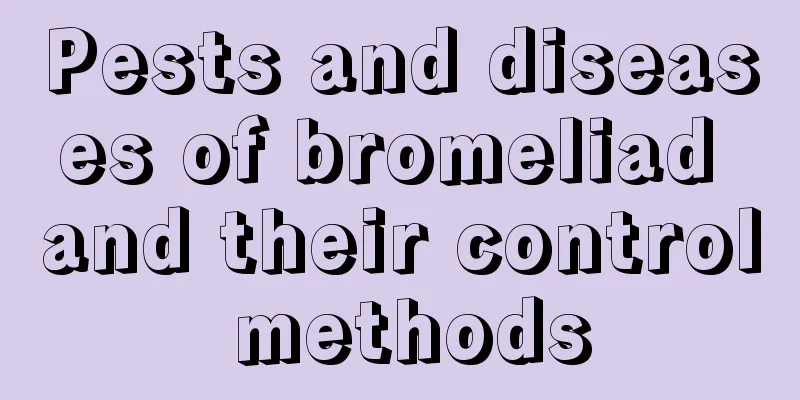Pests and diseases of bromeliad and their control methods

Diseases and prevention methods of bromeliadDiseasesDiseases of bromeliads include anthracnose, gray mold, center spot, stem rot and wilt. Prevention and treatment methodsFor anthracnose, control should be carried out with 500 times diluted 25% Carbon Trane wettable powder or 600 times diluted 27% Copper Noble suspension in a 1:1:160 ratio Bordeaux mixture. Do it once every half a month, for a total of 2-3 times. To treat gray mold, the indoor humidity should be lowered. Watering is best done in the morning on a sunny day. Avoid watering on rainy days. At the same time, ventilate the plants late in the morning on sunny days to ensure indoor air circulation. For stem rot, spray 1000 times solution of 38% cypermethrin, 800 times solution of 30% carbendazim/carbendazim, or 500 times solution of thiram on the bromeliad from mid-May to the early stage of the disease in July. Pests and control methods of bromeliadPestsThe most serious insect pests of bromeliads are mealybugs and scale insects. Mealybugs are small sap-sucking insects with white sticky powder on their bodies. They can harm crops, fruit trees, gardens, forests and pastures. Scale insects will suck the sap of plants, which can cause the death of the entire plant in severe cases. Their secretions may also induce sooty mold disease, which is extremely harmful. Prevention and treatment methodsFor mealybugs, if the infection is not particularly serious, you can remove them manually, or spray them with a strong stream of water (be careful not to damage the bromeliad), or rinse the plants with a 1:1 solution of clean water and methylated alcohol. This will not only flush away the insects, but also kill those that cannot be flushed away. During the cultivation process of bromeliads, if scale insects are found on individual leaves, they can be gently brushed off with a soft brush, or combined with pruning, cutting off the insect-infested branches and leaves. They must be brushed clean, cut clean, and burned in a centralized manner; do not throw them away randomly. |
<<: Diseases and pests of spider silk and their control methods
>>: Common diseases and pests in Cameo and their control methods
Recommend
The difference between Euphorbia pilosa and Euphorbia pulcherrima
1. Difference of blades The leaves of Euphorbia m...
How to plant leek seeds and get good germination results (leek seed planting method and steps)
How to grow chives from chive seeds Spring chives...
When is the latest time to plant mustard greens?
Mustard is a highly adaptable vegetable that can ...
What should I do if the leaves of the star beauty are shriveled?
The reasons for the shriveling of the leaves of t...
The main value of Aralia dasyphylla
The main value of Aralia dasyphylla The meaning o...
How to plant rose seedlings
Potted seedlings 1. Generally, flower pots should...
Cultivation methods and precautions of Emerald Philodendron
1. Maintenance methods 1. Temperature: It likes w...
How often should the grape vines be watered?
How often should the grape vines be watered? It i...
There are black spots on the bottom of the camellia leaves. What's going on?
1. What happened? There are some black spots on t...
How often should orchids be watered and how should they be watered?
Orchid is an elegant flower with strong ornamenta...
What happens if you eat too many mulberries?
1. Getting angry Mulberries are warm in nature an...
Is Blue Enchantress a rose?
1. The Origin of Blue Enchantress Blue Rose is a ...
How to grow comfrey
1. Maintenance methods 1. Temperature: Comfrey do...
How to fertilize dianthus? Fertilizing in this way will easily make the pot full of flowers!
Growth habit Dianthus prefers a sunny and warm en...
How to dwarf potted jujube trees? Dwarfing and pruning techniques for jujube trees
By combining bonsai technology with jujube dwarfi...









